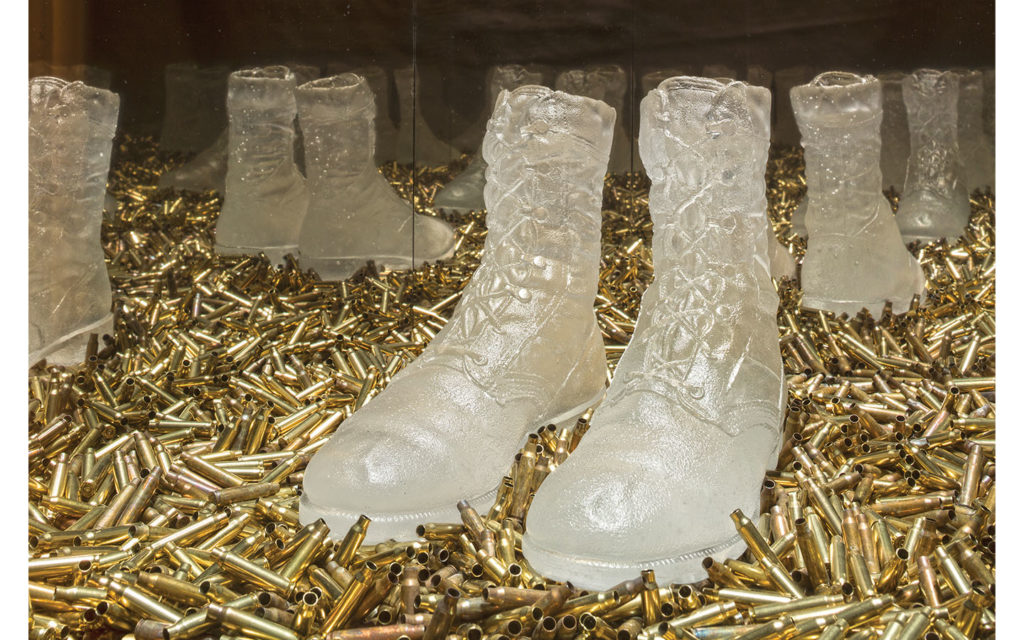What is it?
Artist
Jeffrey Stenbom (b. Harrisburg, Illinois 1978)
Title
Everlasting Impact
Year
2015
Medium
Kiln-formed glass, found objects, and one-way mirrored float glass
Dimensions
24 x 24 x 24 in.
Credit line
Purchased 2021, James and Karen Hyde
About the Work
About
Jeffrey Stenbom lives in Minnesota near the Wisconsin border. His primary medium is glass. He is attracted by its beauty, but also sees in its conflicting qualities of strength and fragility parallels in himself. A US Army veteran, Stenbom enlisted immediately after 9/11, serving a six-month tour of duty in Kosovo and then eight months in Iraq. He came back home and turned to making art in an effort to find solace from post-traumatic stress disorder (PTSD). While preferring glass, he always searches for the medium he feels is best suited to express the idea at hand. Stenbom is what noted curator and critic Glenn Adamson calls a “post-disciplinary” artist.
Prior to his military service, Stenbom studied neon. In 2005, upon resuming his education after Iraq, he became enamored with kiln-formed glass. In this process, glass is shaped by gravity interacting with the heat of a kiln. After exploring it first at a community college, Stenbom completed his undergraduate work at the University of Wisconsin–River Falls where, in his final year, he worked with faculty member Eóin Breadon. In 2015, Stenbom received his MFA from Tulane University in New Orleans, where he studied under Gene Koss, a University of Wisconsin–River Falls alumnus.
Everlasting Impact is one of four works that comprised Stenbom’s graduate show at Tulane. The show was meant to bridge the divide between those who have served and those who have not. Everlasting Impact seeks to demonstrate that PTSD is not unique to conditions of war, but challenges multitudes as part of daily existence. Here, a pair of kiln-formed boots, cast from those he wore in Iraq, sit isolated in a glass vitrine amidst an assault rifle’s spent brass bullet casings. From certain vantage points, its spectral image is echoed in the one-way mirrored glass on the four walls of the vitrine. The vitrine has no top panel, which allows the intense light from a spotlight above to spill directly over the chilling contents. For Stenbom, the work is a metaphor for self: feeling at times very much alone, he is in reality surrounded by the many who suffer from PTSD.—Davira S. Taragin

